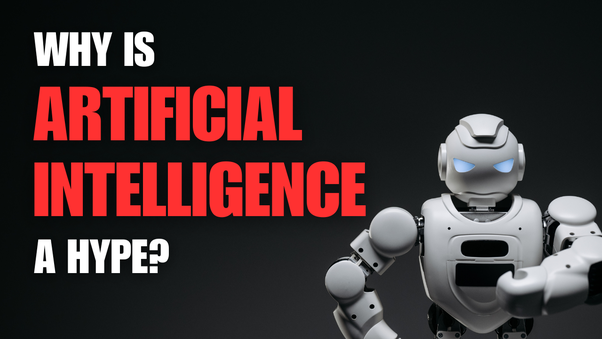Introduction for AI Journey
Artificial intelligence (AI) is a groundbreaking technology that holds the promise of changing industries, boosting productivity, and solving complex problems. However, the success and effectiveness of AI are not driven by the hype but by the data that fuels it.

Understanding the importance of data in the age of AI is crucial, especially for beginners. This guide takes an in-depth look at the role of data in AI its importance, and the future.
What is Artificial Intelligence?
Artificial intelligence refers to the creation of machines that will help fulfill the needs of human intelligence in general. This includes learning, reasoning, problem-solving, understanding natural language, and perception. AI is a large field that includes and employs various technologies, such as machine learning (ML), natural language processing (NLP), computer vision, and robotics.
The Role of Data in AI
Data is the lifeblood of AI. Without data, AI systems cannot learn, adapt, or make decisions. Here’s a deeper look into how data fuels AI:
1.Training AI Models
AI models, particularly machine learning algorithms, rely on large amounts of data to learn patterns and make predictions. This training data is very important because it helps the models to understand and perform correctly on different written words, which helps us a lot.
2.Improving Accuracy
The quality and quantity of data directly impact the accuracy of AI models. More diverse and high-quality data leads to better learning and more reliable predictions, It helps to reduce the risk of biases and errors.
3.Real-World Applications
Data enables AI to be applied in various real-world scenarios. For instance, in healthcare, AI analyzes patient data to identify disease patterns and suggest treatments. In finance, AI models predict market trends by examining historical data.
Types of Data Used in AI
1.Structured Data
Organized data that is easily searchable, such as databases and spreadsheets. Structured data is often used in applications like fraud detection and customer relationship management (CRM).
2.Unstructured Data
Data that is not organized in a predefined manner, including text, images, videos, and social media posts. Unstructured data requires advanced AI techniques, such as NLP and computer vision, for analysis.
3.Semi-Structured Data
This data type combines elements of both structured and unstructured data. Examples include emails and XML files. Semi-structured data has some organizational properties but lacks a rigid structure.
Practical Steps for Beginners in AI
1. Learn the Basics:
Start with a foundational knowledge of AI and device learning. Online courses, tutorials, and textbooks can deliver a solid grounding.
2. Get Hands-On with Data:
Practice working with datasets. Use tools like Python, R, and libraries such as pandas, NumPy, and sci-kit-learn to manipulate and analyze data.
3. Understand Algorithms:
Study various machine learning algorithms, such as linear reversal, finding trees, and neural networks. Understand their applications and rules.
4. Experiment with Projects:
Build small projects to apply your knowledge. Kaggle and other platforms offer datasets and contests that can provide practical knowledge.
5. Stay Updated:
AI is a rapidly growing field. Keep up with the latest research, trends, and tools by reading journals, and blogs, and following meetings.
6. Network and Collaborate:
Join AI communities and forums. Team on projects, partake in discussions , and learn from others’ experiences.
7. Focus on Ethics:
Understand the ethical importance of AI. Learn about data privacy, bias, and rights to ensure that your AI solutions are reliable and equitable.

How Data Drives AI Development
1. Data Collection
The AI journey begins with collecting relevant data. This data can be gathered through sensors, surveys, web scraping, and user interactions. Ensuring that the data is representative and free from biases is essential.
2.Data Preprocessing
Raw data is often noisy and incomplete. Data preprocessing involves cleaning the data, handling missing values, and transforming it into a suitable format for analysis. Techniques like normalization, scaling, and encoding are commonly used at this stage.
3.Feature Engineering
This step involves selecting and transforming variables (features) from the dataset that will be used to train the AI model. Good feature engineering can significantly enhance the performance of an AI system.
4.Model Training
With preprocessed ata, AI models are trained using various algorithms. This iterative process involves the model learning from the data, making predictions, and adjusting based on errors. Depending on the problem, techniques like supervised learning, unsupervised learning, and reinforcement learning are used.
5.Model Evaluation
Once trained, the model is evaluated using test data to assess its performance. Metrics such as accuracy, precision, recall, and F1 score measure how well the model performs.
6.Deployment and Monitoring
After evaluation, the model is deployed in a real-world environment. Continuous monitoring is essential to ensure the model performs as expected and to make necessary updates based on new data.
Challenges in Data-Driven AI
1.Data Quality
Poor-quality data can lead to inaccurate AI models. Ensuring that data is clean, relevant, and unbiased is a significant challenge.
2.Data Privacy and Security
Handling sensitive data, such as personal information, requires strict privacy and security measures. Compliance with regulations like GDPR and CCPA is crucial.
3.Data Integration
Combining data from different sources can be challenging due to differences in format, quality, and structure. Effective data integration is necessary for creating comprehensive datasets.
4.Scalability
As the volume of data grows, managing and processing it becomes more complex. Scalability issues need to be addressed to handle large datasets efficiently.
5.Bias and Fairness
AI models can inherit biases present in the data, leading to unfair outcomes. Ensuring fairness and eliminating biases is critical for ethical AI.
Future Prospects of Data-Driven AI
1. Enhanced Personalization
With more data, AI can provide highly personalized experiences in areas like healthcare, education, and marketing. This will lead to better outcomes and higher customer satisfaction.
2. Autonomous Systems
Data-driven AI will enable the development of more advanced autonomous systems, such as self-driving cars and drones, which can operate safely and efficiently in complex environments.
3. Predictive Analytics
AI will enhance predictive analytics capabilities, allowing businesses to anticipate trends, make informed decisions, and optimize operations.
4. AI in Healthcare
Data-driven AI will revolutionize healthcare by enabling early disease detection, personalized treatments, and efficient management of healthcare systems.
5. AI for Social Good
AI can be used to address societal challenges, such as climate change, poverty, and education, by analyzing data to find effective solutions.
Conclusion
The journey of AI is intrinsically linked to data. While the hype surrounding AI often focuses on its futuristic capabilities, the reality is that data is the true driver of AI success. Understanding the critical role of data in training, improving, and applying AI systems is essential for anyone entering this field.
By focusing on data quality, addressing challenges, and leveraging the power of data-driven AI, we can unlock the full potential of AI and accelerate across domains. Whether it’s enhancing personal work, developing autonomous systems, or using AI for social good, it’s all easy because the future of AI is bright, fueled by data, and grounded in reality.



